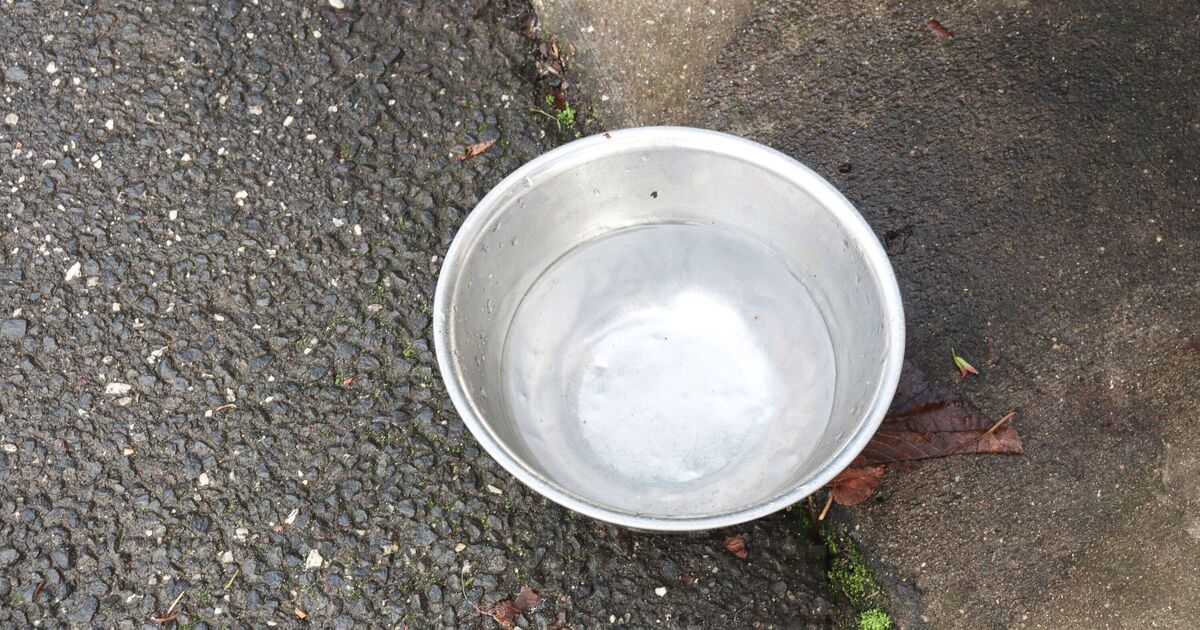Britons have been told to put bowls of water outside their homes during scorching summer temperatures. The UK has seen three heatwaves so far this year, as well as the hottest June on record in England. Many areas have experienced cooler, wet and windy conditions in recent days as Storm Floris struck, but forecasts suggest the rest of August may see more summery conditions return.
Taking precautions to stay safe in hot weather, like staying hydrated and taking breaks from the heat are key, but Britons with gardens are also advised to consider what impact high temperatures can have on local wildlife. Experts emphasise the importance of ensuring birds have enough to eat and drink, as they’re an important part of the ecosystem.
But other creatures can struggle when the mercury shoots up too, like hedgehogs.
MyBuilder.com worked with support from wildlife hospital Tiggywinkles to put together expert advice to create hedgehog-safe outdoor spaces this summer.
Sharon Jacobs, Head Nurse at Tiggywinkles, said: “During the summer heatwaves, it’s vital to remember that hedgehogs are not only struggling with the high temperatures themselves – many are also caring for tiny babies.
“Leaving out shallow dishes of water and checking long grass or under shrubs before gardening so that you don’t inadvertently disturb a nest can make all the difference. A small act of kindness can save a whole family of hedgehogs.”
MyBuilder, a platform that connects tradespeople with customers, shared several key jobs to help protect the prickly creatures, including making ponds and paddling pools safe for them.
The company says leaving a small animal bowl or saucer of water “is vital to keep hedgehogs hydrated, and to stop them seeking a water source in a dangerous place”.
It suggests leaving the bowl “in a quiet and shady area”.
“A healthy hedgehog should drink around two tablespoons of water a day, so providing a small bowl every few days should do the trick. Wet cat food is a great choice of food to leave out for hedgehogs at this time of year, as it can provide hydration as well as sustenance.”
But while available sources of water are important, some can be hazardous.
“In this heat, wildlife, including hedgehogs, will be seeking out water sources,” the firm says. “A pond or paddling pool can seem extremely tempting – but could trap or even drown hedgehogs.
“To prevent this from happening, cover your pools where possible, or build a ramp for creatures to use to clamber out of danger.
“These ramps can come in a variety of forms, from chicken wire, to logs, to small piles of rocks. Check your pool or pond several times a day to make sure no animal has fallen in.”
The firm also flags the importance of ensuring hedgehogs are protected from the sun’s rays. “If you have a hedgehog house, place it in a shaded area, such as under a tree or hedge,” it advises.
“Otherwise, a pile of logs or leaves can do a great job of shielding a hedgehog from the heat. Avoid putting shelter on any surfaces that can get hot, such as artificial grass, as this could potentially burn the animal’s feet and cause more damage than good.”
During the summer months you may spot newborn baby hedgehogs (known as hoglets), and Britons are advised to give them some space, even if its on its own.
“Don’t panic if it’s alone, hoglets are usually independent from adults and don’t always need to be rescued,” MyBuilder says. “Only intervene if they are obviously injured, surrounded by obvious danger, squeaking with their eyes shut, or appear smaller than an apple.
“If intervention seems necessary, take the hoglet to a wildlife rescue centre or vet. The heatwave will be making it harder for hedgehogs and hoglets to find food and water, so helping sustain them is a good idea.
However, its crucial to be aware of what they can safely eat. “It’s recommended that you feed them tinned dog or cat food, or specialist hedgehog food,” the company advises. “Do not give them dry food, as they can’t eat it, or milk, as it may give them diarrhoea. A shallow water dish that they won’t be able to drown in is also a good idea.”
Some homeowners prefer the look of a manicured lawn, but keeping some parts of the garden wild provides both shelter for wildlife and a natural food source.
“Allowing nettles and other weeds to grow will provide shelter for your hedgehogs throughout the warmer months,” MyBuilder recommends.
In warmer temperatures, hedgehogs may sneak into your compost pile for shelter, so Britons are advised to check them before sticking in spades or pitchforks to avoid injuring them, instead tuning over the compost slowly and gently before digging in.
Thirsty hedgehogs may also be attracted to drains as a water source in the heat, but can become trapped in them.
The firm therefore advises keeping drains covered, “using a specific ‘manhole cover’ used for them, or using a water-filled bag on a more temporary basis”.
However, if you’re looking to build over your drain permanently, “you may need permission from your local authority”, it warns.

